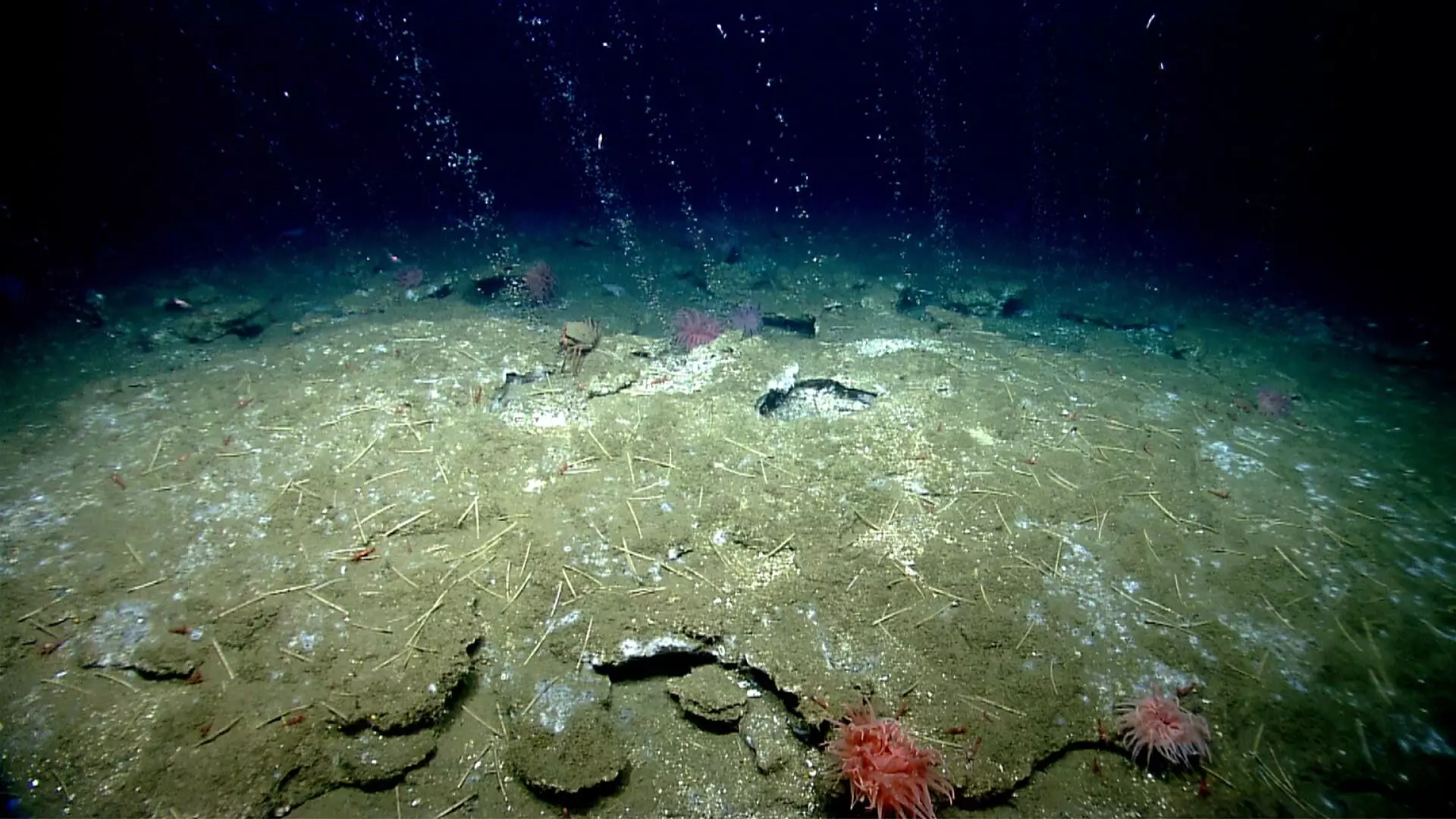Methane is a greenhouse gas that is significantly more potent than carbon dioxide, approximately 25 times more powerful. When methane combines with water at low temperatures and high pressure, it forms methane hydrate, a solid compound similar to ice. These methane hydrate deposits are abundant under the seafloor, storing at least 1,800 gigatons of carbon. Some estimates suggest this number could be as high as 20,000 gigatons. To put this in perspective, the total amount of carbon emitted by humans in the form of CO2 from fossil fuels since the industrial revolution is only 475 gigatons.
One of the key concerns with methane hydrate is its fragility. If temperatures rise, the hydrate can break down into methane and water, releasing methane gas into the environment through seepages in the sediment. Scientists worry that climate change could exacerbate this methane release, further contributing to the greenhouse effect. The extent of this danger is still uncertain, but looking at the past may provide some insights.
Uncovering Past Warm Periods
Jens Fiebig and his research group, in collaboration with the University of Hamburg and Shanghai Ocean University, explored the potential risks associated with destabilizing methane hydrate deposits. The Earth has experienced prolonged warm periods in the past, raising questions about the impact on methane outgassing. However, due to limitations in measuring historical ocean floor temperatures accurately, understanding the relationship between temperature and methane flux has been challenging.
In 2020, Fiebig’s team introduced a new method, known as dual clumped isotope thermometry, which could offer valuable insights into this connection. Published in Science Advances, this study showcased how this technique could help determine the temperature conditions under which carbonate minerals, a byproduct of methane consumption by microorganisms, formed in the past.
Significance of Dual Clumped Isotope Thermometry
The methane released from hydrate deposits is utilized by microorganisms living in the ocean sediments, serving as an energy source for them. As these microorganisms metabolize the methane, carbonate minerals containing carbon and oxygen are produced. Dual clumped isotope thermometry examines the grouping of heavy isotopes within these carbonate minerals, providing information on both formation temperatures and non-thermal effects related to microbial activity and methane flux.
Dr. Philip Staudigel, who spearheaded the research, highlights the importance of considering these non-thermal effects in understanding past methane outgassing. By identifying the “fingerprint” of microbial communities and methane flux in carbonate samples, the research team was able to refine temperature calculations and gain a more accurate understanding of sediment conditions when these carbonates were formed.
The potential impact of methane hydrate deposits on climate change remains a topic of ongoing research and concern. By leveraging innovative techniques like dual clumped isotope thermometry, scientists are making strides towards unraveling the complexities of past methane release and its implications for future climate scenarios.


Leave a Reply